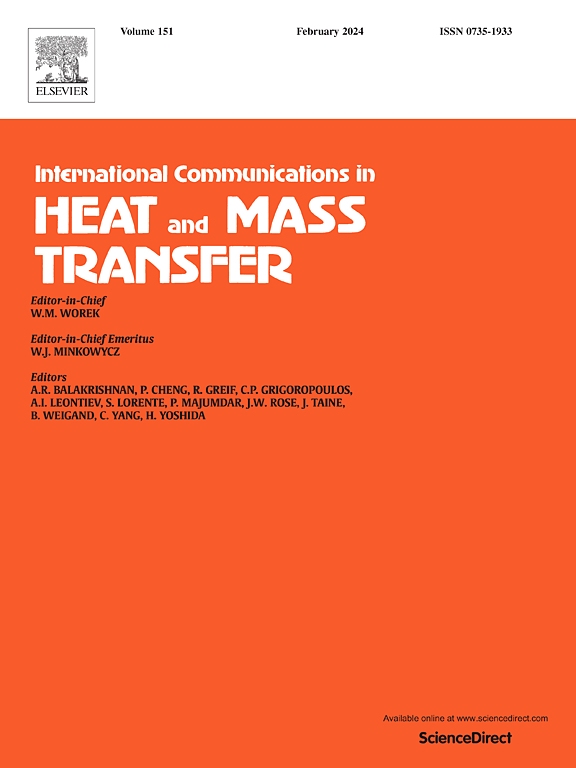Numerical analysis of thermal management in a photovoltaic solar system with porous heat storage, parabolic reflector and self-cleaning coating
IF 6.4
2区 工程技术
Q1 MECHANICS
International Communications in Heat and Mass Transfer
Pub Date : 2025-03-21
DOI:10.1016/j.icheatmasstransfer.2025.108847
引用次数: 0
Abstract
This work aims to enhance the performance of concentrated photovoltaic-thermal (CPVT) solar systems by integrating a phase change material (PCM) layer to improve solar energy saving and utilization. A parabolic reflector focuses solar irradiation onto the CPVT system, while the discrete ordinates (DO) method is employed to analyze the heat flux distribution on the panel. To mitigate the negative impact of dust deposition on the glass surface, the nanoparticle-based self-cleaning coating is applied. The PCM layer is further optimized using porous foam to increase thermal storage capacity, and fins are added to improve overall system efficiency. Simulations indicated that neglecting buoyancy force effects is a reasonable assumption. Incorporating porous foam and fins in the storage system significantly enhances electrical performance, resulting in a 2.94 % improvement in electrical efficiency (ηel) at higher flow rates (Q), exceeding the PCM-only configuration by 2.66 %. The highest electrical efficiency achieved is 13.35 % with the PCM-Foam-Fins configuration. Additionally, the liquid fraction (LF) decreases significantly with increasing flow rates, showing reductions of 40.74 % without fins and 35.77 % with fins. Coating the glass cover with SiO2 nanoparticles improves LF, particularly at lower flow rates.
求助全文
约1分钟内获得全文
求助全文
来源期刊
CiteScore
11.00
自引率
10.00%
发文量
648
审稿时长
32 days
期刊介绍:
International Communications in Heat and Mass Transfer serves as a world forum for the rapid dissemination of new ideas, new measurement techniques, preliminary findings of ongoing investigations, discussions, and criticisms in the field of heat and mass transfer. Two types of manuscript will be considered for publication: communications (short reports of new work or discussions of work which has already been published) and summaries (abstracts of reports, theses or manuscripts which are too long for publication in full). Together with its companion publication, International Journal of Heat and Mass Transfer, with which it shares the same Board of Editors, this journal is read by research workers and engineers throughout the world.

 求助内容:
求助内容: 应助结果提醒方式:
应助结果提醒方式:


